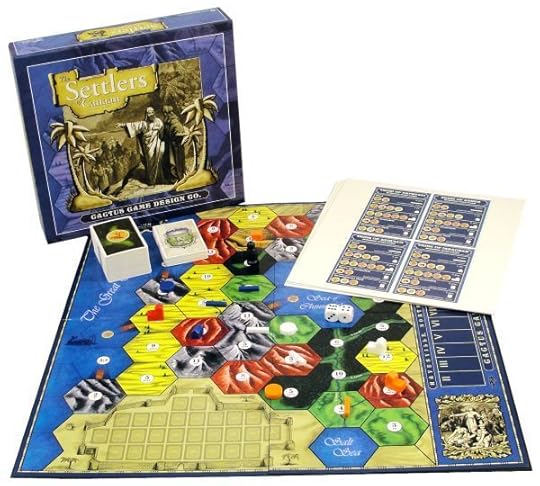Connie Rossini's Blog, page 19
December 24, 2013
This Christmas seems strangely familiar…

D, M, C, and J slide together at the park in September 2013.
Dear Family and Friends,
Did our Christmas photo give you a déjà-vu? Then you know the theme for this year’s letter! Five years ago we took a slide photo of the three boys and licensed it as micro stock. It continues to pop up in unexpected places. This year, my brother Matt saw it in an electronic photo frame at Target. A friend told me it’s used in a Catholic Heritage Curriculum science text.
Our first event after my last letter was Christmas at Grandma Rossini’s. After four years of gathering elsewhere, we’re back in Eagan for Christmas, at least for now. There’s no party like it. The 28 grandkids take up all the seats—let alone the air waves.
Dan returned to LaCrosse in April for a friend’s wedding. Maybe next year we’ll be able to visit as a family. J (2) has never been to Wisconsin, but M (9) and C (7) were born there.
We did go back to the Grotto of the Redemption in Iowa together. Last time we were there, I was expecting C. The boys fed the swans and bought souvenir rocks, besides the obligatory rock candy.
D (11) and M have now had piano lessons for as long as I did as a kid—one year. We bought an electronic piano. Sometimes Dan will relax long enough to play The Entertainer or other songs from his youth. The piano will mimic nearly every instrument and serenade us at dinner, but my favorite feature is the volume control!
This summer we cleaned out our store room and moved boxes to the attic Dan finished. For the second time, we gave away baby clothes and equipment. We love the extra room, but are sad that era of our lives is—probably!—over.
Meanwhile, I’m back to writing more than I have in years. I blog twice a week. My short ebook, Contemplative Homeschool.
December 20, 2013
An exclusive gift for subscribers to Contemplative Homeschool!

Happy subscribers reading A Manual for Mental Prayer.
I’m so grateful for all of you who follow my blog by email, especially those who have been reading my blog since the beginning. I want to send all my subscribers an exclusive gift for Christmas, A Manual for Mental Prayer. I have compiled this 34-page, 8000-word PDF from sixteen past blog posts on prayer. I edited and reformatted them just for you. I will not be distributing this PDF to anyone but my subscribers–ever.
If you are already subscribed (and are consequently reading this in your email box), you should have received a separate email a few minutes after this one with a link to download the PDF.
If you have not yet subscribed, what are you waiting for? You can do so now by Contemplative Homeschool.
December 17, 2013
Give God your widow’s mite

The Widow’s Mite by Tissot (photo credit: Wikimedia Commons).
I was thinking recently about St. Therese and Judgment Day. Therese wanted to stand before God with “empty hands.” As part of her plan to trust in God rather than in her merits, she chose to give away all her spiritual goods. She offered them to God, not for herself, but for others. She left herself spiritually poor and naked. Then she was able to focus, not on her acts of virtue and self-denial, but on the merits of Jesus. She believed that, seeing her with no works on which to be judged, God would apply Jesus’ works to her account. Thus, her confidence was in Jesus alone.
Following St. Therese, when I make a sacrifice, accept the trials and disappointments of my day, or act virtuously, I picture myself handing a plain brown box to the Blessed Virgin Mary. This is my gift for the Infant Jesus. Mary takes the package and wraps it splendidly with her love and virtues. Then she passes it on to her Son, and He distributes it as He sees fit.
St. Therese had countless gifts to give to God for souls. My gifts, on the other hand, are few and small. I cannot outdo Therese. But I am still hoping to match her. I am giving God my widow’s mite, all I have to live on. And who can give more than that?
“And He sat down opposite the treasury, and watched the multitude putting money into the treasury. Many rich people put in large sums. And a poor widow came, and put in two copper coins, which make a penny. And He called his disciples to Him, and said to them, ‘Truly, I say to you, this poor widow has put in more than all those who are contributing to the treasury. For they all contributed out of their abundance; but she out of her poverty has put in everything she had, her whole living’” (Mark 12:41-44).
Connie Rossini
Other posts you may likeContemplative Homeschool.December 13, 2013
How can you know what your disordered attachments are?

Statue of St. John of the Cross at the diocesan museum in Valladolid, Spain (photo credit: Wikimedia Commons).
Tomorrow is the feast of the great Carmelite Doctor of the Church, St. John of the Cross. I will be giving a talk tomorrow morning on Spiritual Detachment: What, Why, and How? Here is a small sample from that talk, on discerning what disordered attachments you have in your life.
When you want to know what your attachments are so that you can work to remove them, ask yourself the following questions:
What is it hard for me to give up?
If I give up coffee for Lent, do I break down half-way through and drink it? Do I avoid giving up sweets, because I know it would be too hard?
Maybe there are things I can successfully do without for forty days, but when Lent is over, I can’t wait to indulge in again. Could I give up TV for life, if God asked it of me? Could I live without novels? Would I grumble if I had to suddenly reign in my spending?
What is keeping me from doing my duty?
Do I ignore my kids so that I can spend more time on Facebook? Do I skip my prayer time to go out with a friend? Do I think about what would make the other people in my life happy, or am I mostly catering to myself?
What distracts me?
When I pray, am I thinking about Monday Night Football, instead of Jesus? How about that great dinner I just ate?
When other people are talking, am I composing an email in my head (or actually texting), instead of listening?
Do my activities glorify God?
Can I go straight from surfing the net to prayer, or does it make praying harder? Do my radio-listening habits naturally lead me closer to God, or farther away? Is talking on the phone a near occasion of the sin of gossip? Does my reading material make me angry or more peaceful?
Everything that God created is good. But when we make anything other than God an end in itself, we make it into an idol. We are breaking the first commandment. We must strive to make everything in our lives a springboard towards a closer relationship with God.
If you are anywhere near Glencoe, Minnesota, join us at St. Pius X Catholic Church tomorrow at 9 am. The parish women’s group is hosting my talk, so that means ladies only this time. I’ll talk in detail about what disordered attachment is (and isn’t), and give specific strategies to work towards proper detachment.
If you would like me to speak to your group and you live within a couple hours of New Ulm, Minnesota, please use theContemplative Homeschool.
December 10, 2013
How to pray throughout the day

The Angelus by Millet (Wikimedia Commons). In past centuries, Church bells rang three times day to signal everyone should stop what they were doing and pray.
St. Paul urges us to “pray constantly” (1 Thessalonians 5:17). But what does this mean? How can we practice it? When we reach a high state of the spiritual life, we will be in constant communion with God (see, I am assuming we are all going to make it that far). But in the meantime, we can form habits that help us pray throughout the day.
When two people fall in love, they want to spend as much time together as they can. Not only do they go out on a date very evening, they also contact each other during the day. When I was younger, we would call each other or send emails. Today, couples might text each other. Just to hear the other person’s voice or read his words of love would keep the smile on the loved-one’s face for hours.
We need the same kind of contact with God. Our “date” with God is our daily time set aside for nothing but prayer. But we should also talk to God throughout the day. At first, this might be difficult. It might even seem strange until we have formed the habit. We should remember that our little ways of connecting with God are acts of love.
Choose a prayer to repeat throughout the day
One practice that works well for me is choosing a short prayer that I can say at specific times in my day. As my regular readers know, my prayer this year has been, “Jesus, I trust in you.” At other times in my life, I have prayed, “I am the handmaid of the Lord, let it be done unto me in accordance with your word.” The kids and I try to say, “My heart is ready, Oh God, me heart is ready,” throughout our school day. (I wrote a post on Memorize the Faith with your child" />Contemplative Homeschool.
December 6, 2013
Are you living a contemplative life?

Two Girls Praying by Emile Munier
Are you a contemplative? Some people, faced with this question, would answer an enthusiastic, “Yes!” Perhaps they are saints, at a high stage of union with God. Or perhaps they practice Eastern (as in Hindu or Buddhist) forms of meditation that they equate with contemplation. Some would call themselves contemplative because they are thoughtful and quiet. The rest of us might answer, “No.” Since we are not saints, we wouldn’t dare think of ourselves as contemplatives in the proper sense.
Nevertheless, everyone, no matter his stage in the spiritual journey or his vocation, can live a contemplative life.
A contemplative life is a life ordered toward union with God
If you have read The Interior Castle by St. Teresa of Avila, you know Teresa divides the spiritual life into seven stages, which she called mansions. (To be completely accurate, she says that a soul goes back and forth among these stages, rather than proceeding from one to the next in a straight line.) Contemplative Homeschool.
December 3, 2013
Advent activities for your family

D lights the first Advent candle a few years ago.
Advent is here and with it our six-week break from homeschooling. Instead of doing school work, we do an activity each day preparing for Christmas. Some are distinctly religious. Others are not. Here are some ideas for activities you can do with your family.
Learn and sing Advent hymns
Sunday at Mass, D was amazed that I knew many of the verses of O Come, O Come, Emanuel by heart. Well, that was the only Advent hymn I learned in Catholic school, and I don’t recall singing any other one at Mass in the 70s and 80s. It wasn’t until I started praying the Divine Office as an adult that I learned some of the beautiful hymns I had been missing. Here are some you will want to learn along with your kids, if you don’t know them already:
Contemplative Homeschool.
December 1, 2013
Homeschooling with the Carmelite Saints: interview on Radio Maria
In case you missed Contemplative Homeschool.
November 30, 2013
Educational games for your Christmas list

Settlers of Canaan Game
Looking for games to boost family togetherness and knowledge at the same time? Here are several my family enjoys. You can purchase all these games at homeschool retailer Memorize the Faith with your child" />Contemplative Homeschool.
November 27, 2013
Meditation for kids: the thankful leper

Cleansing of the Ten Lepers from the Codex Aureus (photo credit: Wikimedia Commons).
Instructions for Parents
I recommend that you meditate on Luke 17:11-19 in your own prayer time before presenting it to your kids. If you’re not sure how to do this, look at Contemplative Homeschool.



